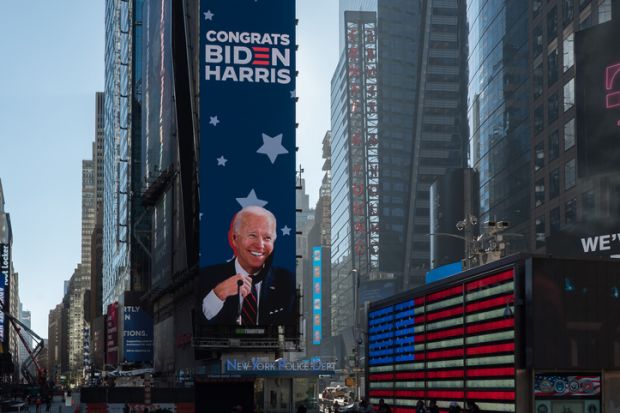President-elect Joe Biden is raising expectations of a broad move to forgive US student loan debt, elevating a policy option on college affordability that carries a complicated mix of potential political support.
Mr Biden, in an exchange with reporters, said he backs the idea of including $10,000 (£8,000) in student loan debt forgiveness as part of a multibillion-dollar bailout for people and industries harmed by the coronavirus pandemic.
“It does figure in my plan,” Mr Biden told reporters asking about the Democrat initiative to include $10,000 per person in student loan debt relief in the aid bill that’s been struggling for months to win passage in Congress.
Unconditional loan forgiveness would take Mr Biden beyond his presidential campaign platform, which proposed seeking $10,000 per person in annual student debt relief for five years in exchange for some type of community service.
While Mr Biden spoke with reporters in the context of overall coronavirus relief, he has been facing pressure from some Democratic allies to simply declare as president that large amounts of federal student loan money will be forgiven.
Those pushing that idea include the US Senate’s Democratic party leader, Chuck Schumer, and a group of leading progressives in the House of Representatives.
Mr Biden, though, has not publicly joined them, and experts are unclear on exactly what loan forgiveness authority a president might have without the explicit approval of Congress.
The White House is generally seen as having some range of unilateral power, given that President Donald Trump issued an order in March sparing student loan borrowers from making any payments until the end of the year.
“It’s clearly possible to do something,” said Frederick Hess, the director of education policy studies at the American Enterprise Institute, a conservative policy thinktank. “The boundaries of what that something is are entirely unclear.”
Concerns over expanding US presidential power in all policymaking arenas have grown in recent years, given that partisan tactics such as gerrymandering have produced an increasingly factionalised and moribund legislative branch.
Mr Biden is expected to test that power for a number of his policy priorities. They include college affordability, where his chief campaign promise – covering tuition fees for all students at two-year public colleges and most students at their four-year counterparts – faces difficult prospects in the expected Republican-controlled Senate.
Given that reality, some leading congressional Democrats see unilateral loan forgiveness as a leading non-legislative option to help whittle down the $1.5 trillion on student loan debt owed nationwide.
For others along the political spectrum, it’s more complicated. Many are excited by projections that large-scale student debt forgiveness could give the teetering US economy a huge boost, but are troubled by the idea of giving away federal money.
Americans with student debt are hardly alone in struggling during the pandemic, said Sandy Baum, a former professor of economics at Skidmore College and expert on higher education finance at the Urban Institute, a left-leaning thinktank.
Broad student loan forgiveness “is essentially a transfer to a group of people that excludes everyone who didn’t go to college – the group struggling most”, Dr Baum said.
Yet for those labouring under the $1.5 trillion debt load, solutions are not obvious. Dr Hess firmly opposes unconditional loan forgiveness and sees a potential “bipartisan sweet spot” in Congress tying loan repayment levels to income. He then quickly acknowledged that conservatives might not welcome the idea of taxpayers covering loan costs for students who choose majors known to be associated with low-paying careers.




